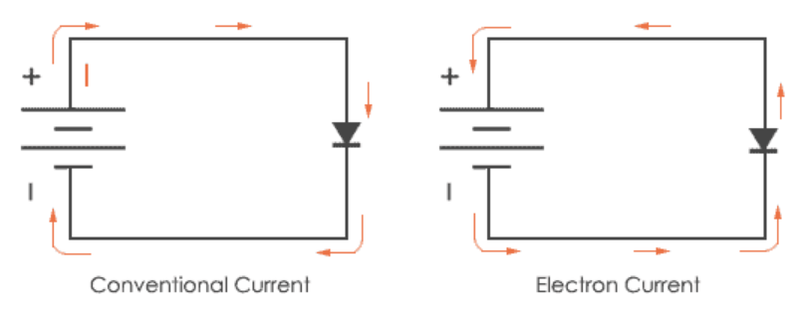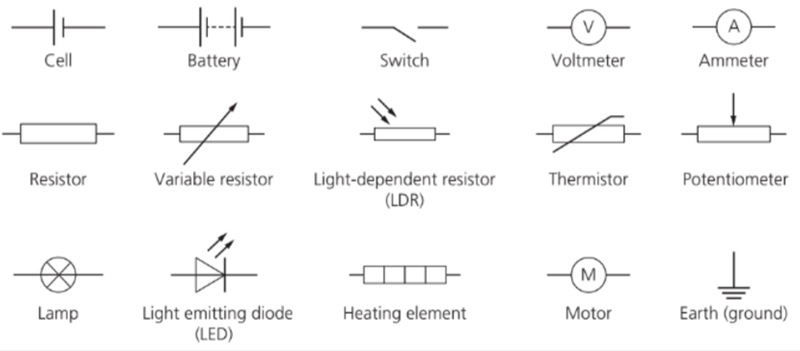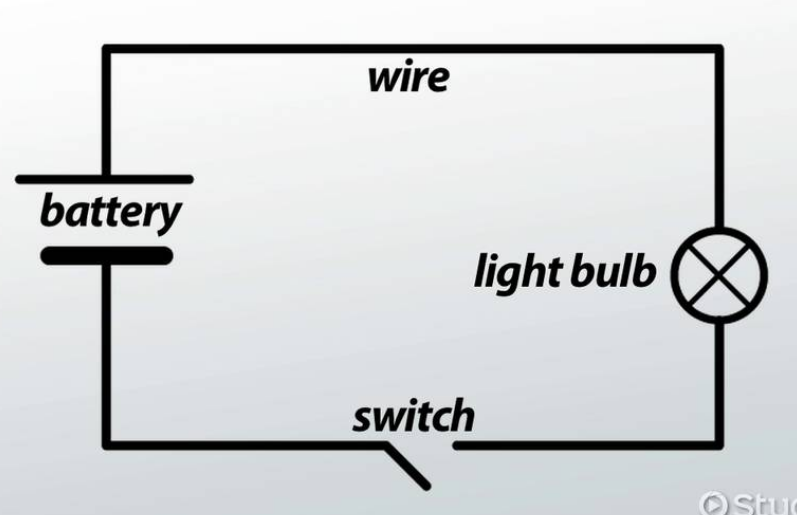What is Current?
- We've gone over how atoms are composed of neutrons, protons and electrons.
- As electrons are not attached in the nucleus and instead orbit the atom, they can leave their orbit and move around freely under certain conditions.
- The movement of electrons is called current.
- By definition, the current is the rate of flow of charge.
- In other words, it is how much charge flows per second.
- Direct current (dc), written as I, is the flow of charged carriers (electrons), given by:

- Alternating current (ac) is when the direction of electrons is constantly shifting.
- The unit for current is amperes, which are one of the fundamental S.I. units.
- It is defined as one coulomb per second, or 1A = 1Cs⁻¹.

- Electrons are incredibly small, meaning they can easily move in-between atoms.
- However, the formation of atoms does affect how easily electrons can move around.
Conventional Current
- In a circuit, where the positive end of a battery is connected to the negative end of a battery with a wire, the electrons will flow from the negative end, where there is excess electrons, to the positive end, where there is a lack of electrons.

- However, historically it was thought that current moved from the positive end of the battery to the negative end instead.
- For consistency, this labeling is still used, and thus "conventional current" is the opposite direction to actual current.
- Due to the nature of current and how electrons move incredibly fast, the direction of current flow doesn't matter too much in most circuits.
Electrical Circuits
- An electrical circuit is a system of doodads attached together by wires with current flowing through them.
- They can be drawn on paper with a variety of handy symbols.


- As current flows through the circuit, it has various effects, such as making the lightbulb work and shine light.
- Other components such as the switch can cut off current.
Sources
https://www.codrey.com/dc-circuits/conventional-current-vs-electron-current/